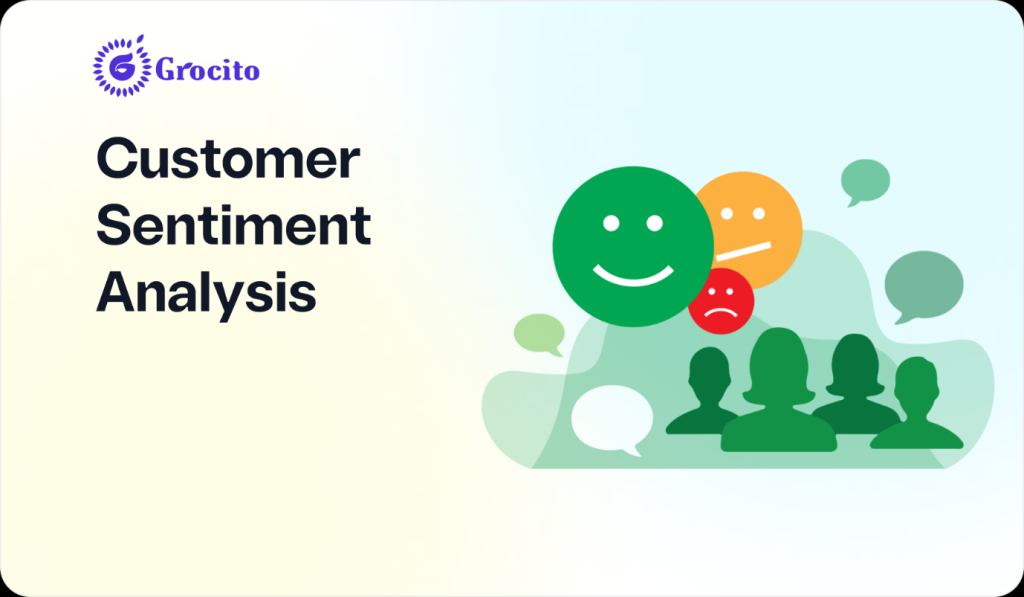Every customer sentiment, whether positive, negative, or neutral, provides valuable insights that can help you enhance your products and improve the overall customer experience. Let’s see Understanding and measuring customer sentiment is crucial for businesses to gauge customer satisfaction.
If a customer had a negative shopping experience, you might expect them to tell you, but that’s not always the case. Research indicates that only 16% of customers use social media to voice their complaints, and just 22% leave reviews on third-party sites.

However, the fact that most customers aren’t sharing their thoughts publicly doesn’t mean you can’t understand their feelings about your brand. By conducting a customer sentiment analysis, you can discover what your customers think about your company and gain valuable insights into the performance of your customer service team.
What is customer sentiment?
Customer sentiment measures your customers’ positive, negative, or neutral feelings toward your brand and products. It can also reflect their opinions about your industry, competitors, and even current events and trending topics. Enhancing overall customer sentiment can lead to more satisfied customers and foster long-term loyalty.
You can monitor customer sentiment through various methods, such as surveys and social listening tools, to gain a better understanding of how different aspects of your shopping experience impact customer attitudes. For instance, a lengthy checkout process might generate negative sentiment, while interactions with a knowledgeable and patient representative can create positive sentiment.
Why measure customer sentiment?

- Enhance the customer experience
- Recognize customer strengths and weaknesses
- Engage with customer interests

Customer sentiment is a qualitative metric in customer service that can be just as impactful as sales data for enhancing brand loyalty and overall satisfaction.
Here’s why businesses gather, measure, and analyze customer sentiment:
Improve the customer experience
Customer sentiment highlights both your strengths and areas for improvement. For Gyve Safavi, cofounder of the toothbrush brand SURI, analyzing customer sentiment provided an opportunity to refine their product offerings, from adjusting font sizes to streamlining the checkout process.
Identify competitor strengths and weaknesses
Understanding why customers have a negative sentiment toward a competitor can highlight strategic gaps that you can address. Conversely, discovering why customers have a positive sentiment toward a competitor can reveal areas where you may be falling short and offer a roadmap for surpassing expectations.
Tap into customer interests
Collecting customer sentiment data helps you understand what matters to your audience and why. Use customer sentiment analytics as your guiding star to uncover what excites your customers and what motivates them to make a purchase.
5 ways to measure customer sentiment

- Surveys
- Social media listening
- Messaging apps
- Shopping customization
- Customer sentiment scores
Understanding how customers feel about your brand might seem challenging since you can’t read their minds. Fortunately, there are several customer sentiment analysis tools and techniques available to help, including:
A. Surveys
Some of the most valuable customer data comes directly from your customers. Encourage them to fill out feedback forms or participate in customer satisfaction surveys to share their opinions. This is a common method for gaining insights into customer service interactions. Additionally, you can use surveys to gather direct feedback on the quality of your support interactions, the customer journey, and your overall products and services.
2. Social media listening
Customers express their opinions, views, and feelings on social media platforms, and social listening tools enable you to monitor all of them. By using social media monitoring tools, you can analyze the tone of customer comments mentioning your brand, track the overall sentiment of online reviews, identify potential issues before they escalate into major PR crises, and respond to customer questions positively and constructively to build brand trust. Both positive and negative customer sentiments can create opportunities to strengthen your community and address any weaknesses in your customer experience.
3. Messaging apps
Messaging your customers provides invaluable direct feedback that can lead to actionable insights. Focus on using messaging platforms that are popular with your core customer demographics. If you run a physical business, look for city or local platforms where residents discuss current events and share tips.
4. Shopping customization
As customers shop, you have a significant opportunity to gather sentiment data about their preferences and motivations. What they gravitate toward and add to their carts provides insights into their likes and spending habits, while what they leave out or abandon also offers valuable information. By incorporating customization options, you can further understand customer expectations and tailor your offerings to meet their needs.
5. Customer sentiment scores
For a more quantitative approach to improving customer sentiment, leverage modern software that utilizes sentiment analysis algorithms and natural language processing.
These tools analyze text, audio, and video of customers discussing their feelings about a topic or brand, assigning a score on a scale of 100. For instance, a sentiment score of 90% indicates positive sentiment, while a score of 50% suggests mostly negative sentiment.



